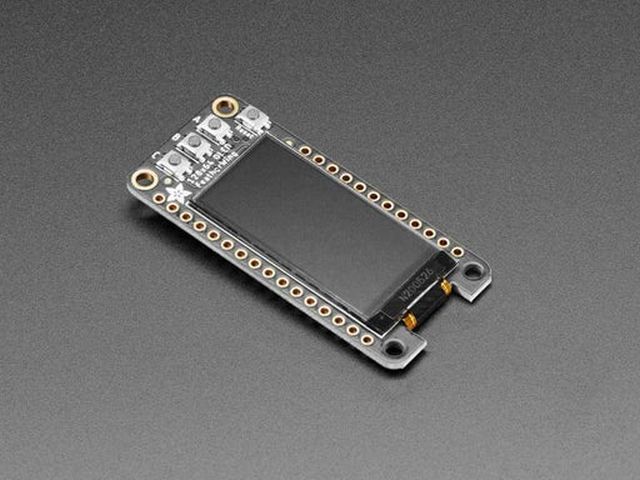
LCD, or liquid crystal displays, have been around for quite some time now and it’s almost impossible to imagine a modern household without at least one LCD display, whether we’re talking about television or our smart electronic displays.
As technology progressed, so did these displays and today they’re available in a variety of sizes and shapes and it seems more improvements are yet to come. For the purposes of this article, we’ll reflect on a specific type of LCD displays to figure out where they stand today.
In an era of vibrant, high-resolution color displays, you might think that monochrome LCD screens seem like a throwback to a simpler time when we were just getting familiar with LCD displays.
For some, it may seem like it was centuries ago even. The adolescents and Gen-Z of today have probably never had the chance to experience all the wonders of a greyscale screen.
However, these grayscale screens still have a significant role to play in various industries and applications. In this post, we will explore the advantages of monochrome LCD displays and explore why these still remain popular in the market.
What Are Monochrome LCD Displays?

Before we dig deeper into the specifics, it’s important to shed some light on what we actually mean when discussing monochrome LCD displays. These LCD displays, as the name suggests, are screens that produce images and text in shades of gray or black and white.
In contrast to color displays that rely on red, green and blue tones (RGB mode), monochrome screens use a single color (typically black). They are a subcategory of LCD technology and offer several unique advantages that make them suitable for specific applications.
7 Advantages of Monochrome LCD Displays
As mentioned, when compared to color LCD displays, the greyscale screens might seem as a completely redundant form of technology nowadays. And yet, the monochrome LCD manufacturers are still in business, meaning that these continue to be an effective solution for certain applications.
Below we’ll take a deep dive into the benefits of a monochrome LCD screen and why it remains in the game after all this time.
1. Power Consumption

One of the most significant and undeniable advantages of monochrome LCD displays is their exceptional power efficiency, making them a great solution for when you are wary of your energy consumption levels.
Since they only need to control the intensity of a single color and do not require the use of colored filters or backlights, they consume significantly less power than their color counterparts. This makes them ideal for battery-operated devices, such as medical instruments, portable measurement tools, and handheld devices used in the field.
Also, the monochrome screen is ideal for audio/visual and embedded displays where having a full range of colors isn’t a necessity. That means you basically get a high-quality display that saves power and still provides an admirable user experience.
2. High Contrast and Clarity
Monochrome LCDs can achieve high contrast ratios, resulting in crisp and clear images and text. The absence of color allows for deeper blacks and more straightforward grayscale rendering.
This high contrast makes monochrome displays suitable for applications where precise and detailed information is critical, such as medical imaging, industrial control panels, and automotive dashboards. So, when you’re in need of a display that can highlight the relevant text, it’s always better to go for a simpler, mono-colored version.
3. Wide Temperature Range

Monochrome LCDs typically have a broader operating temperature range when compared to some color displays. This characteristic makes them suitable for use in extreme environments, including industrial machinery exposed to high temperatures or outdoor equipment subjected to frigid conditions.
4. Enhanced Readability in Direct Sunlight
Monochrome LCDs excel in outdoor applications because they are highly reflective and offer excellent visibility even in bright sunlight. This makes them a preferred choice for outdoor signage, e-readers, and other devices designed for use in well-lit environments. Ever wondered why your Kindle is black and white? Well, the mystery is solved!
5. Longevity and Durability

If monochrome LCD displays are known for something, then that’s their longevity and durability. When choosing a monochrome display, you get a long-time ally in return. They have a longer lifespan than some color displays, reducing maintenance and replacement costs.
It’s no secret that the less complex a system is, the longer it lasts and that’s exactly the kind of durability you can expect with monochrome LCD displays. This reliability is especially crucial in applications where downtime is costly and durable machinery is a must, such as medical devices and industrial equipment.
6. Easily Customizable
Another good aspect of monochrome displays is that they’re a very flexible option and can easily be adapted to meet your needs. If the default sizes do not suit your current appliances, you could always opt for a custom monochrome screen and still get a reliable screen as the end result. This is yet another great feature for when you need a specific size.
7. Cost-Effective

Last, but not least, monochrome displays will definitely put less strain on your budget as they come at a much more affordable price than their counterparts. As the technology behind them is more simple, they’re also more cost-effective when it comes to the process of production.
Also, the tooling costs are much lower as well. When staying within the budget scope is a necessity, monochromatic screens are definitely an affordable alternative.
The Key Takeaways
Monochrome screens continue to play an important role in many industries and even in our daily lives due to their numerous advantages.
Even though we don’t put much thought into monochromatic displays, they’re in fact almost always in our surroundings and if we were to pay attention, we would certainly notice their usage in the appliances surrounding us.
Their power efficiency, high contrast, temperature range, readability, cost-effectiveness and much more make them a preferred choice for applications where color is not a necessity and believe it or not, there are still many situations where that’s the case.












